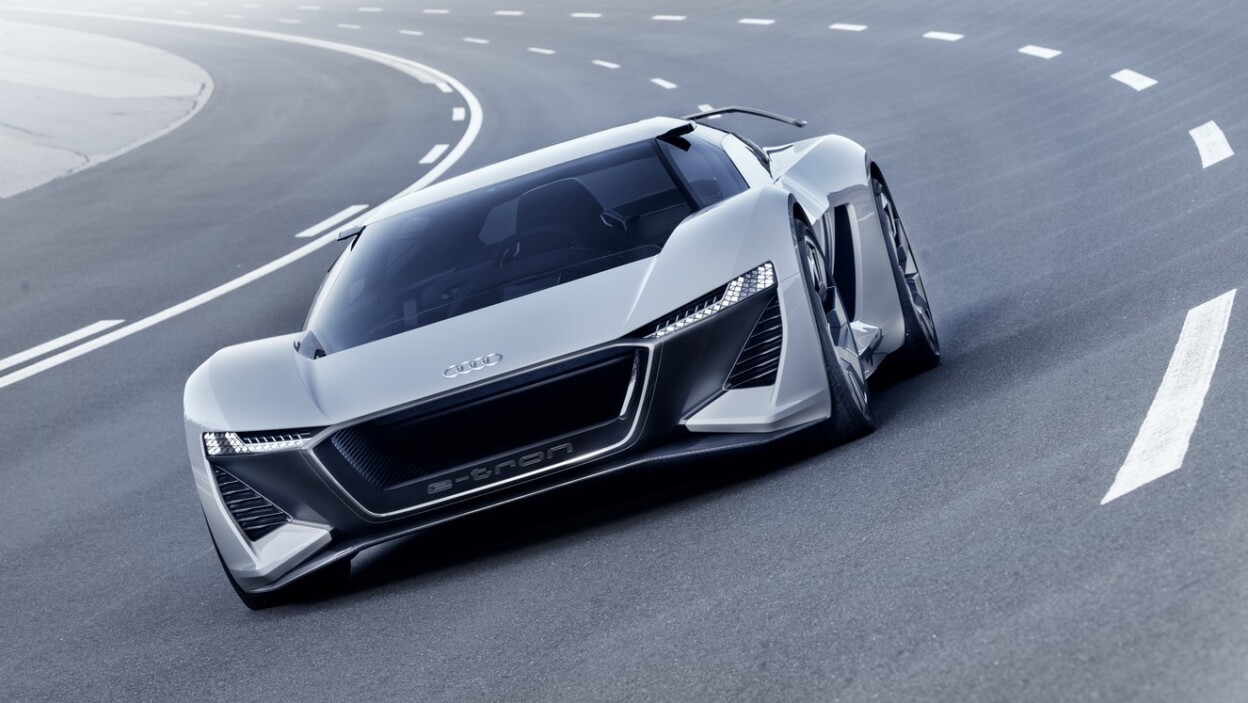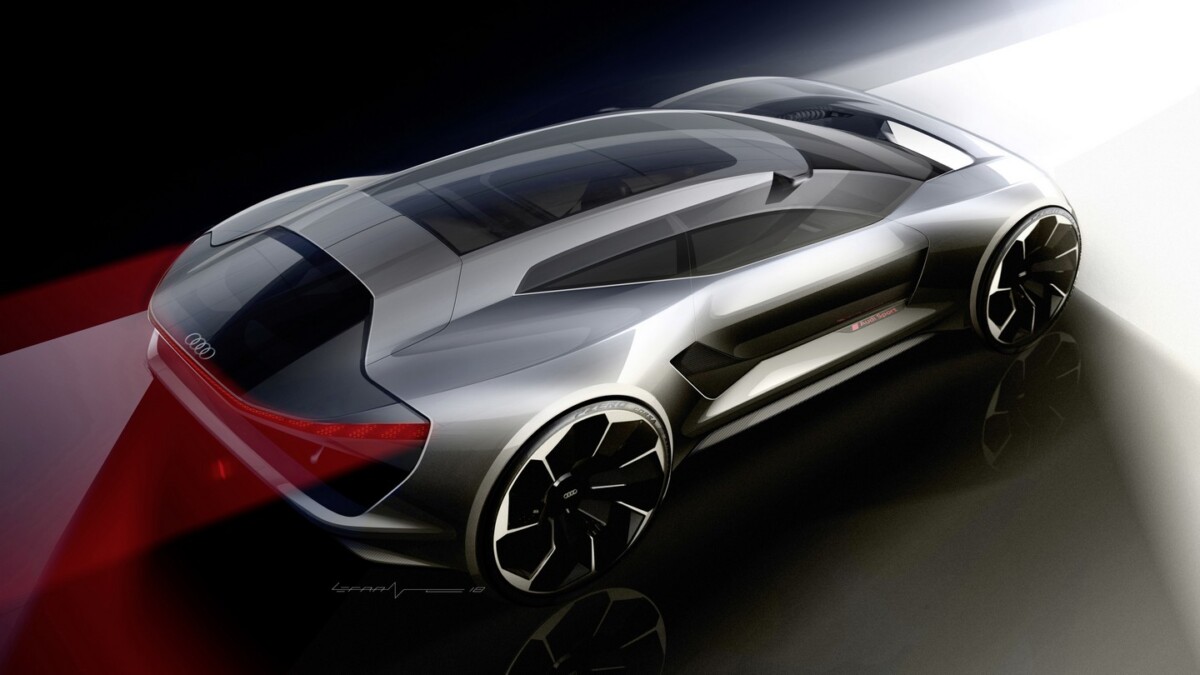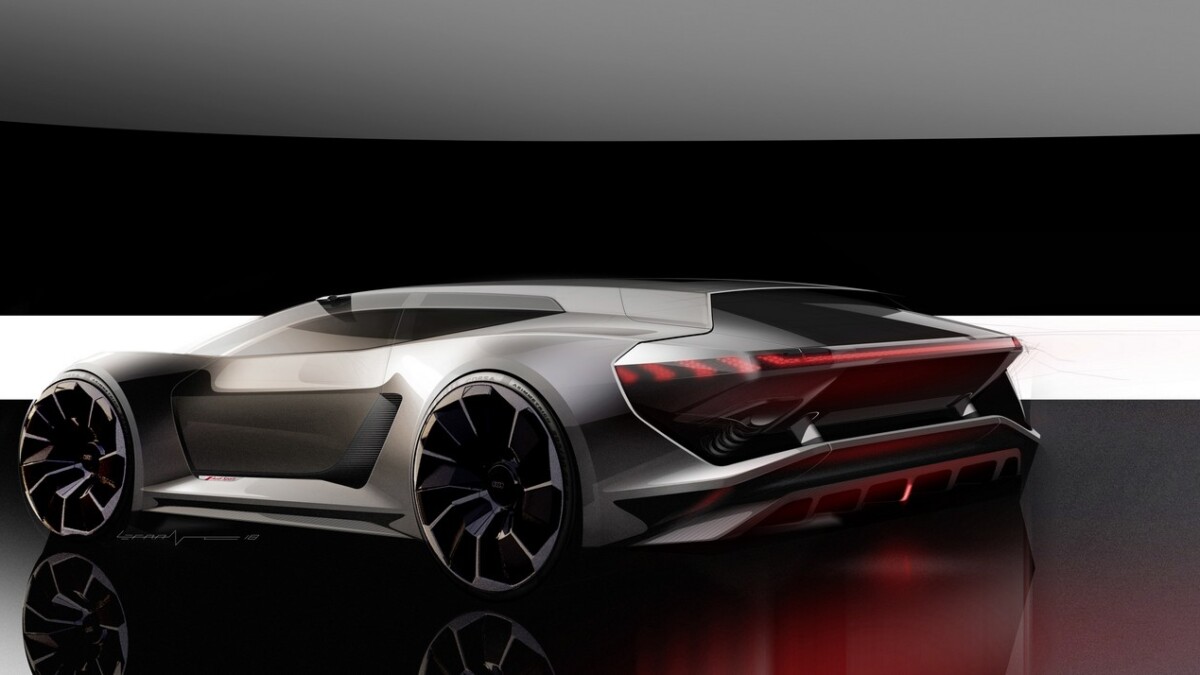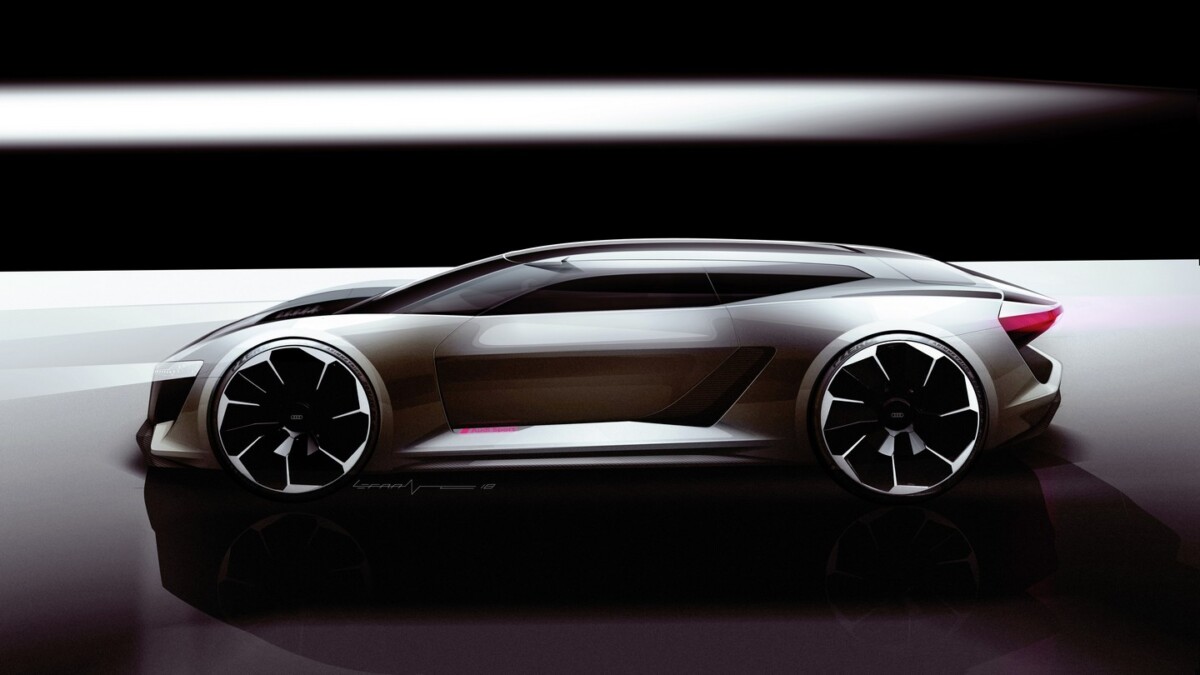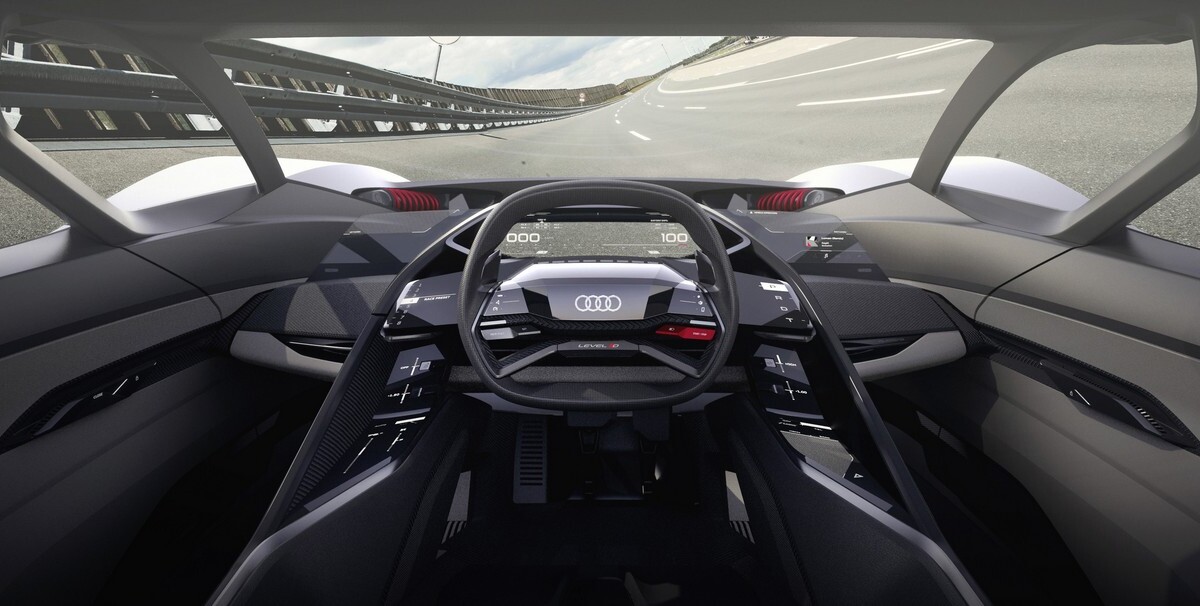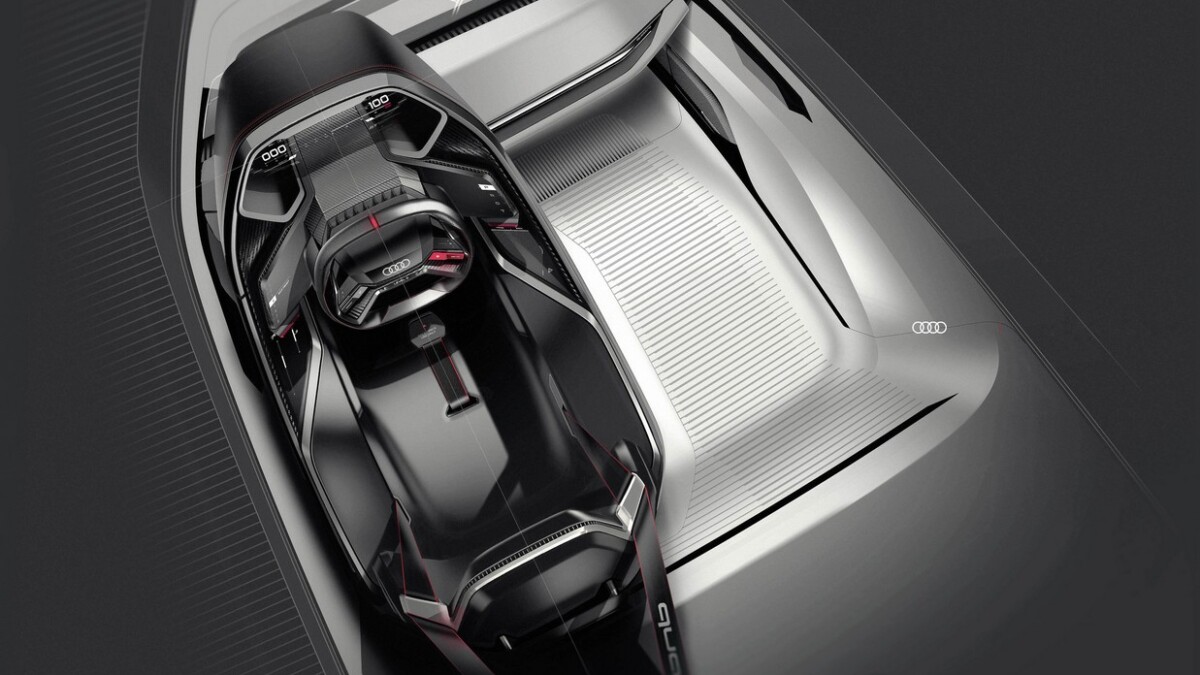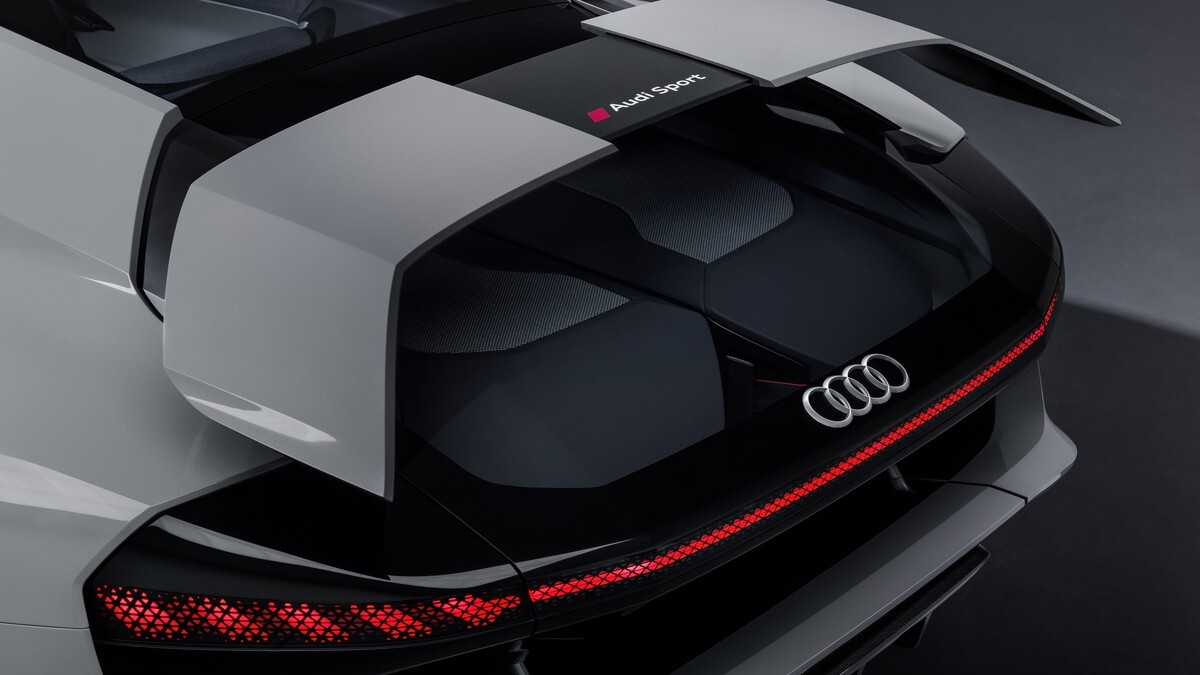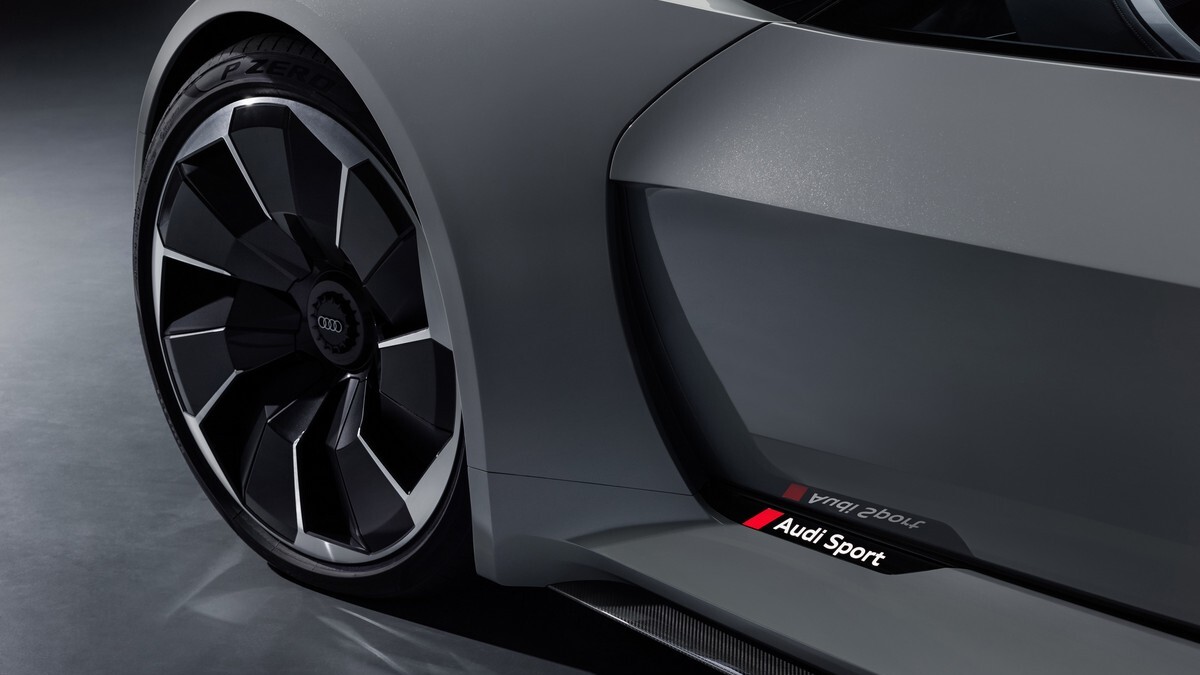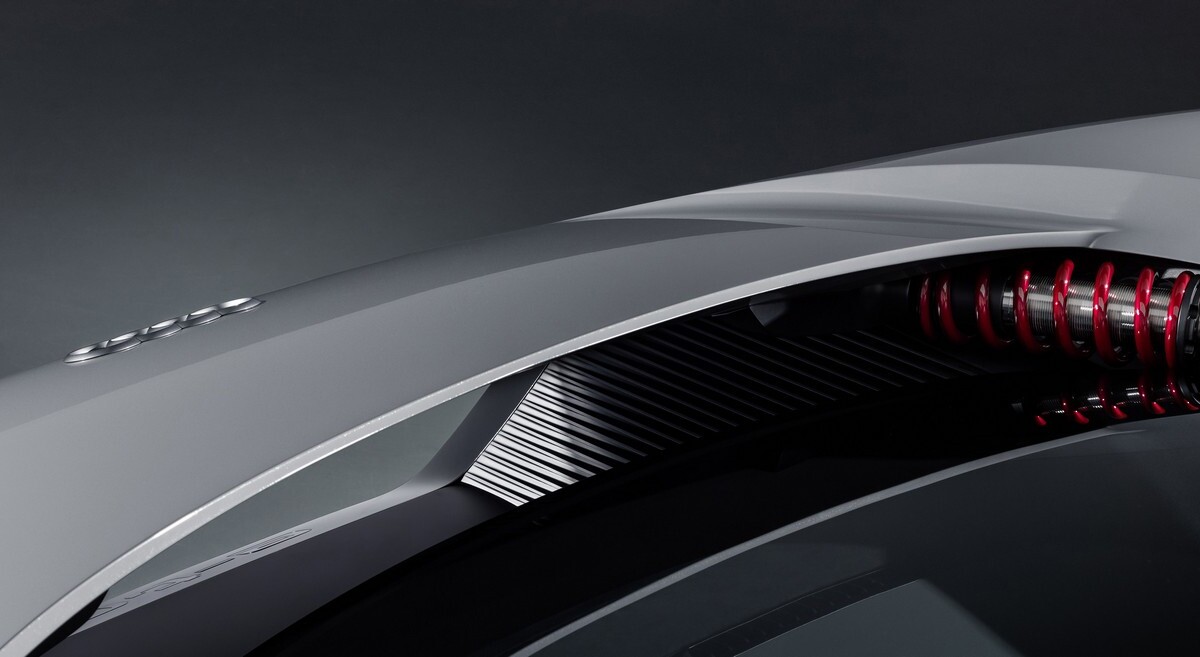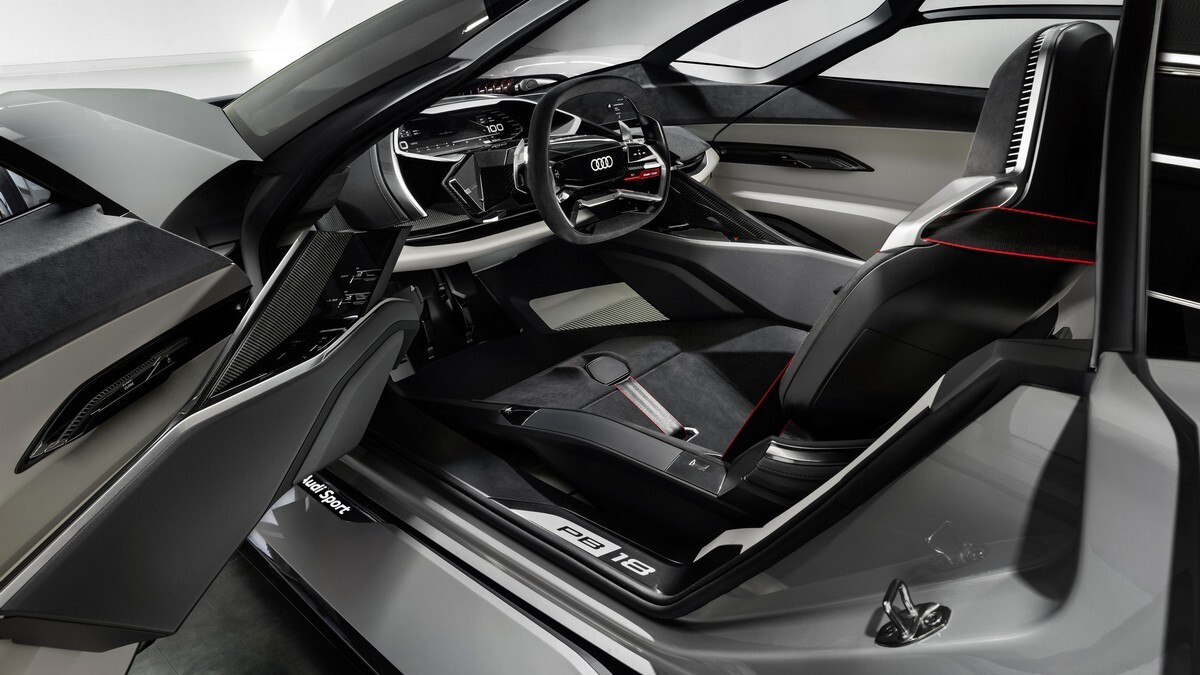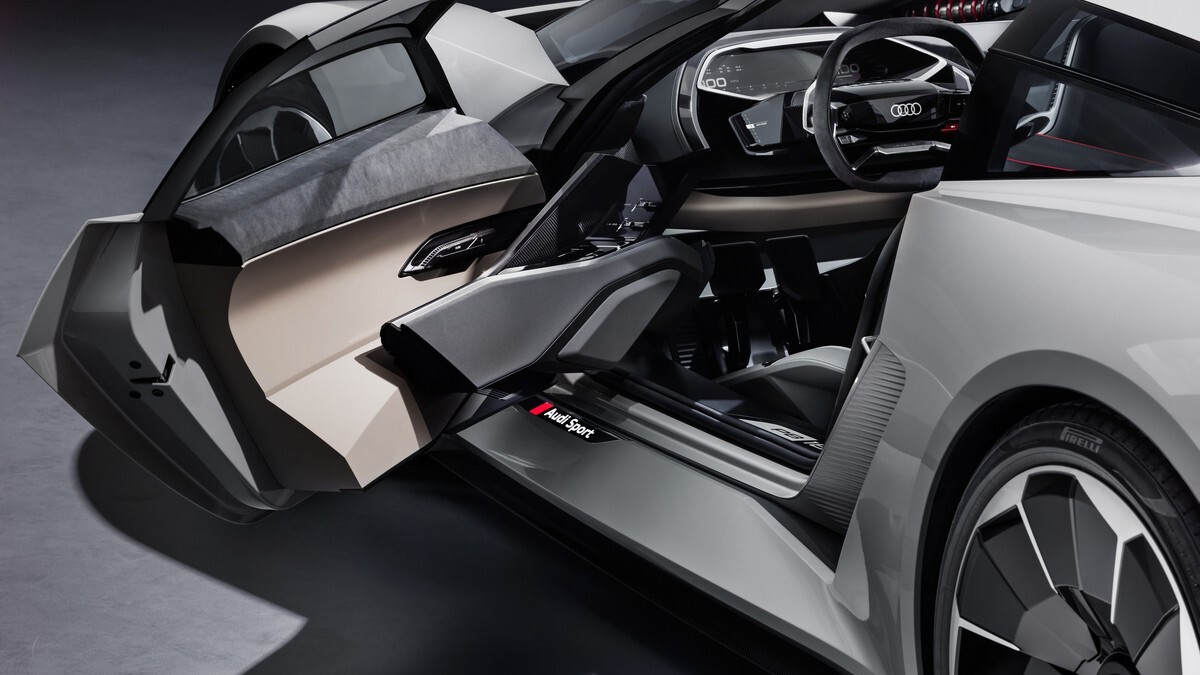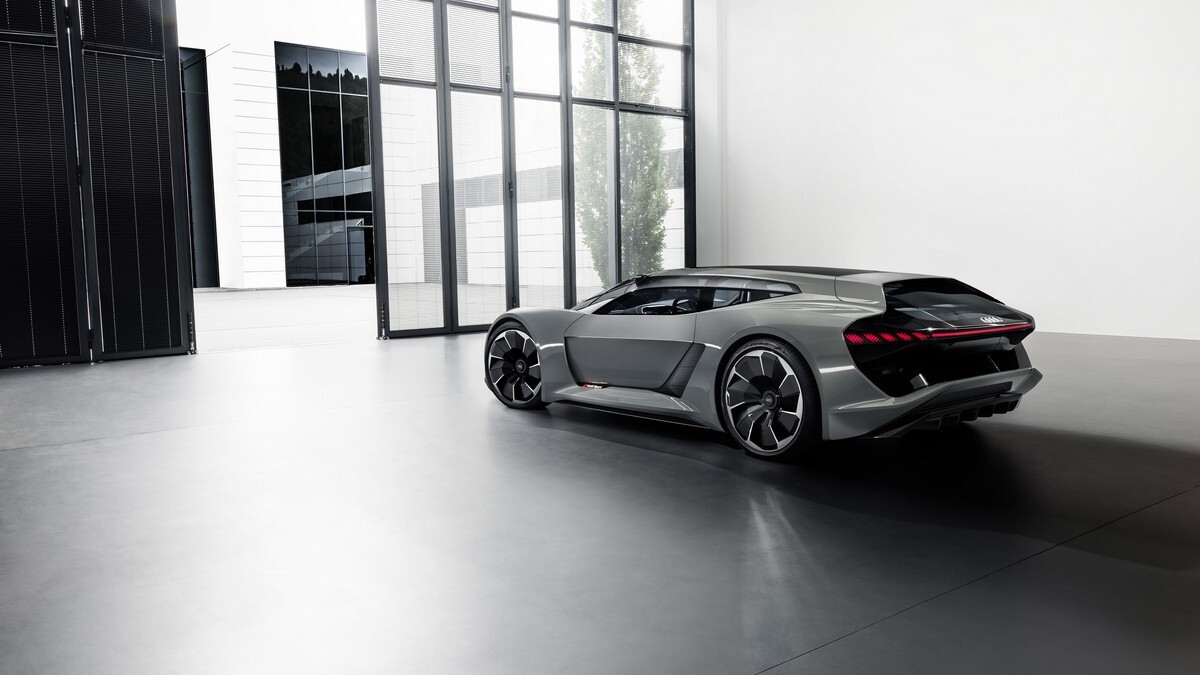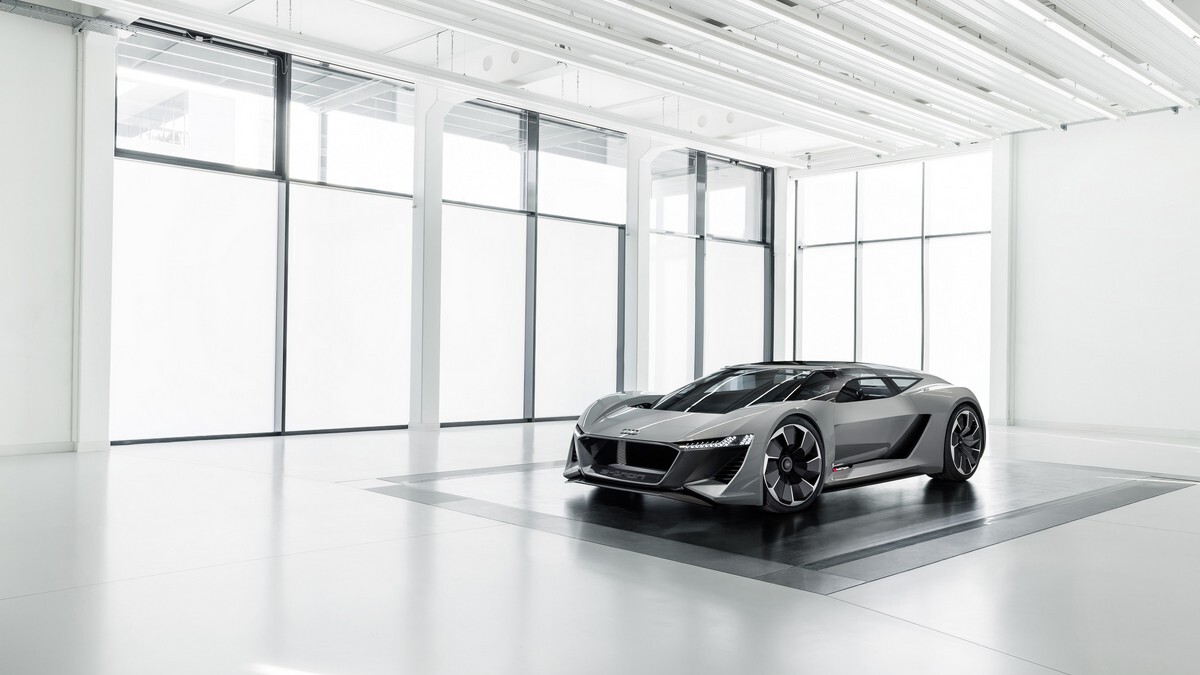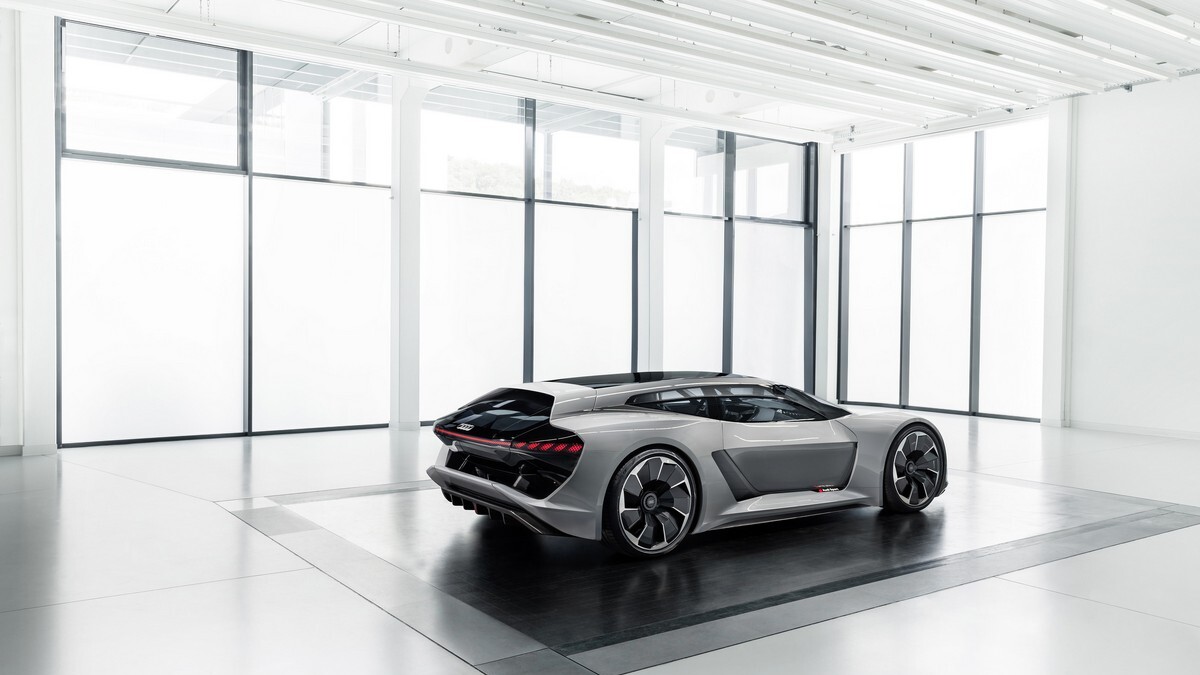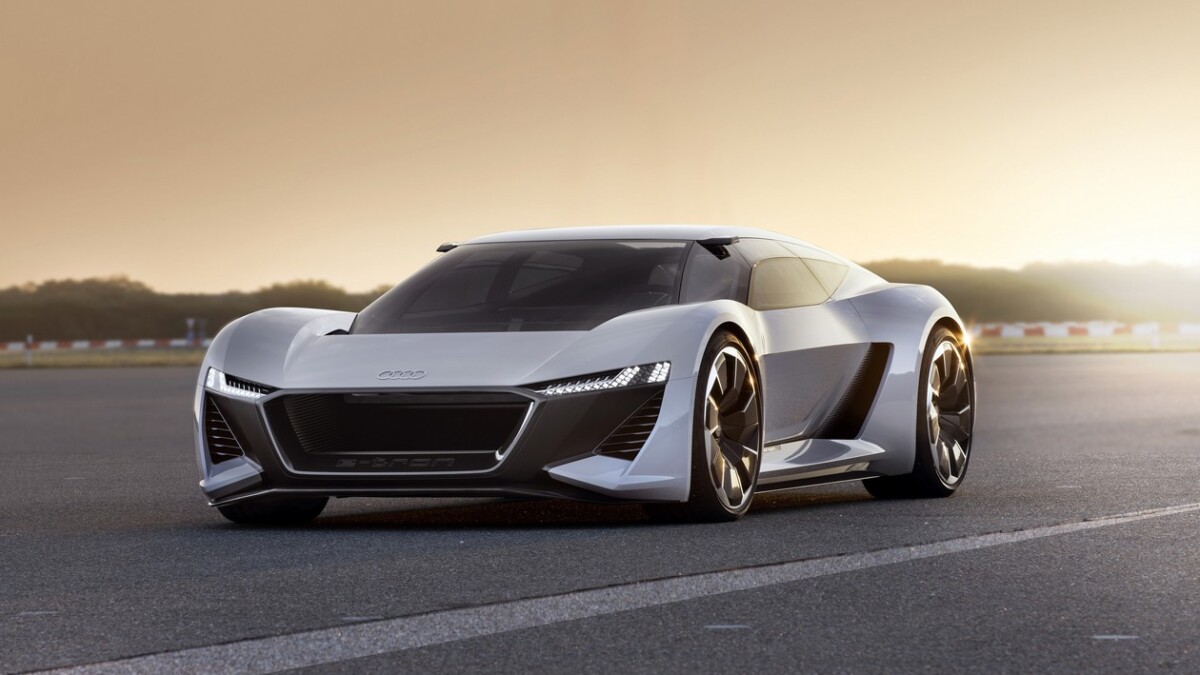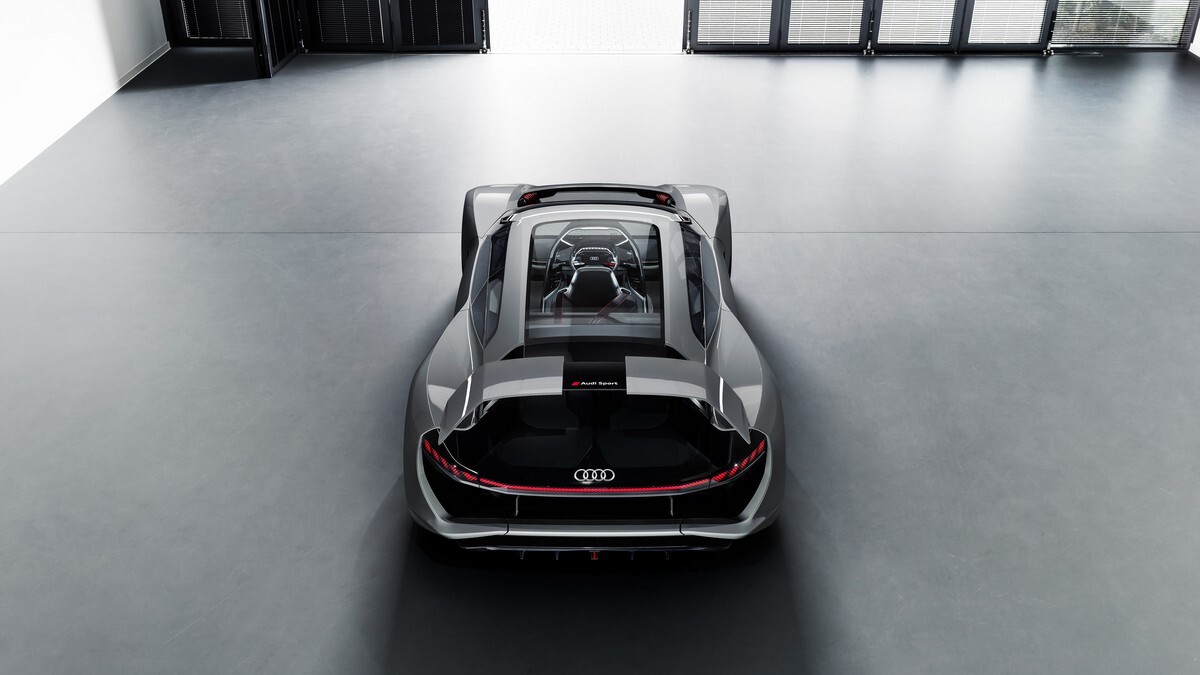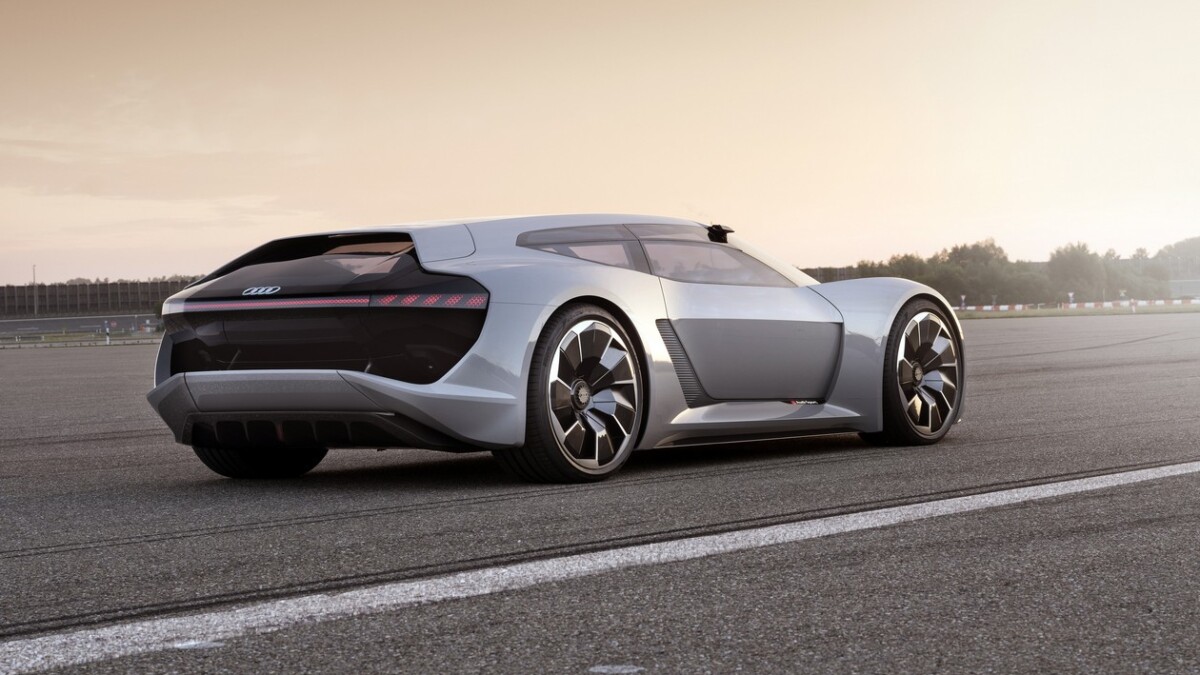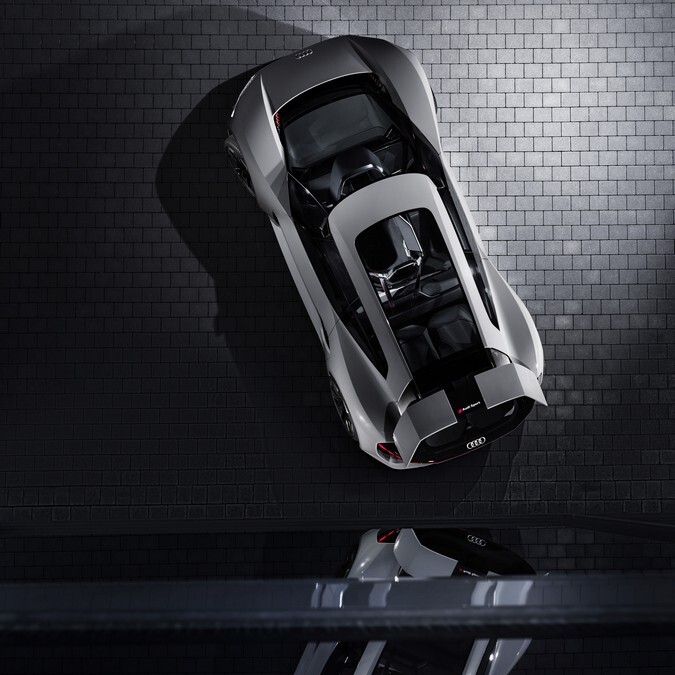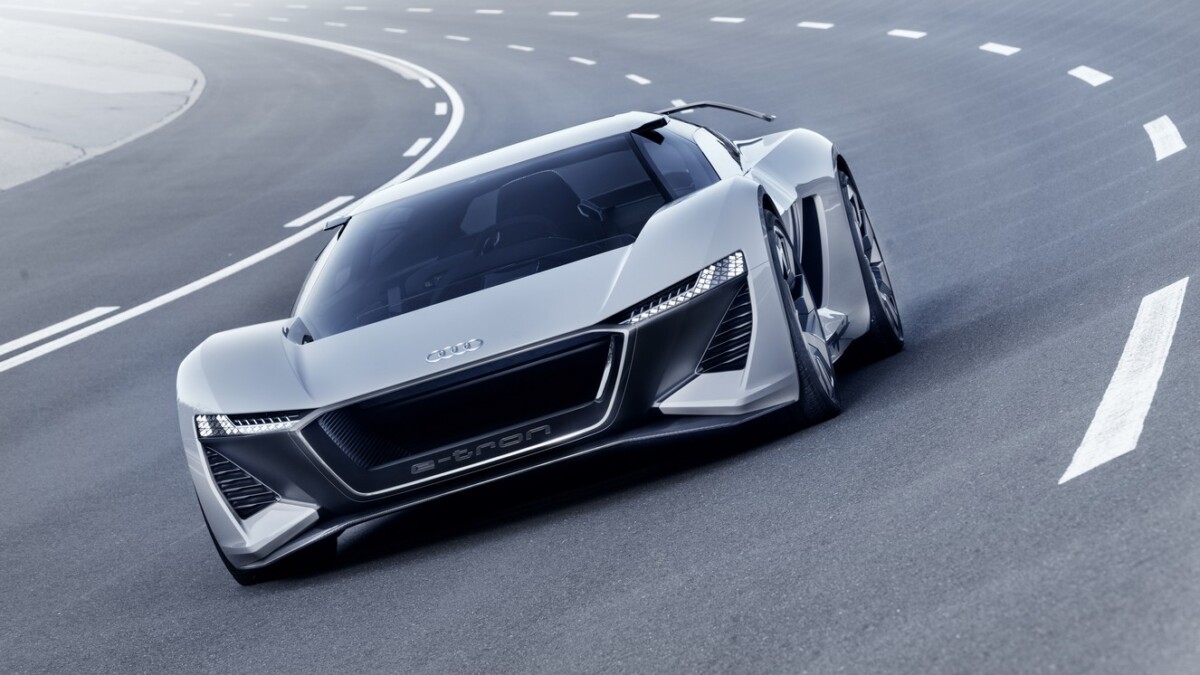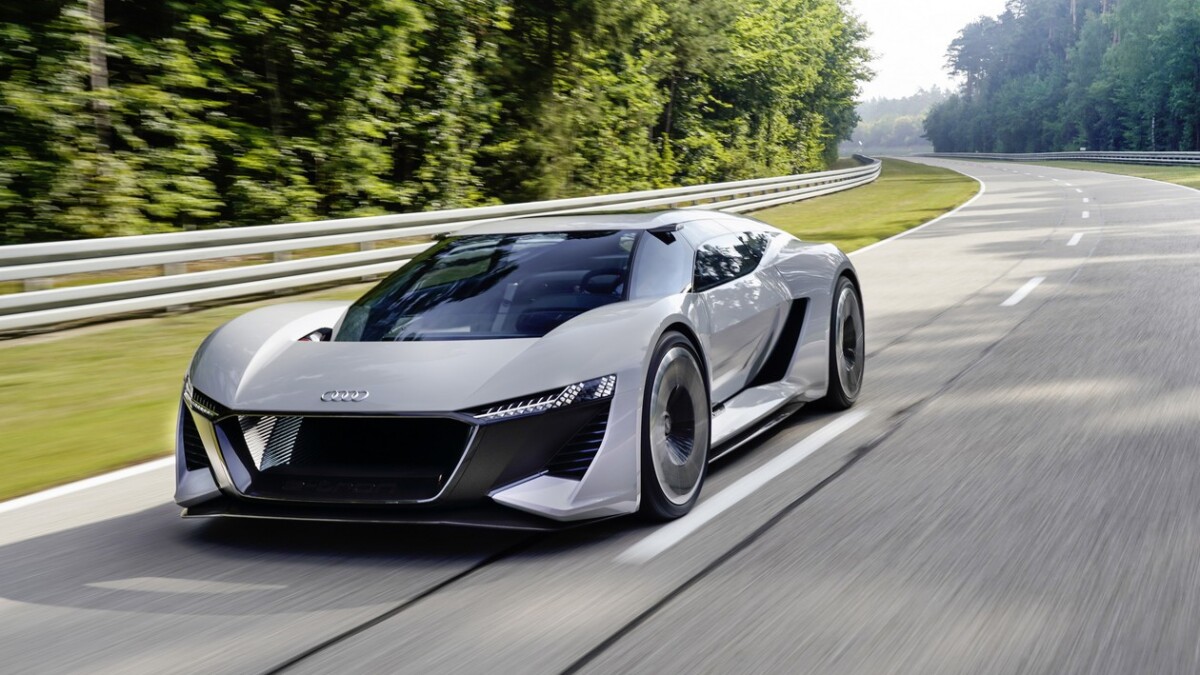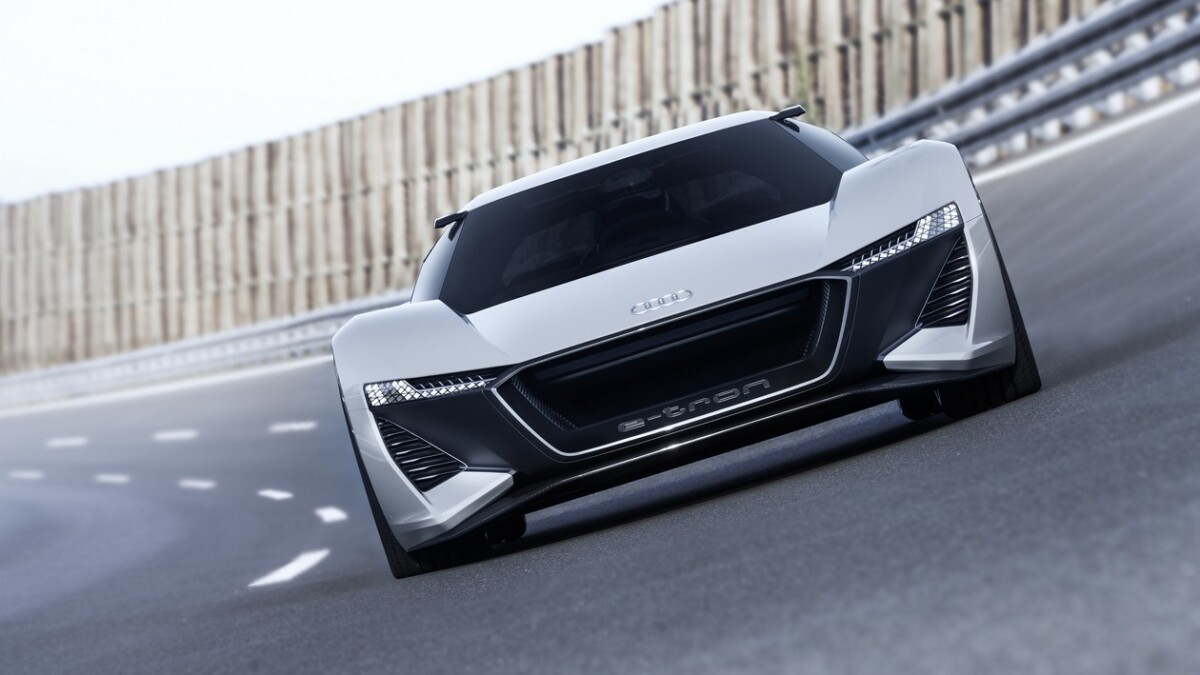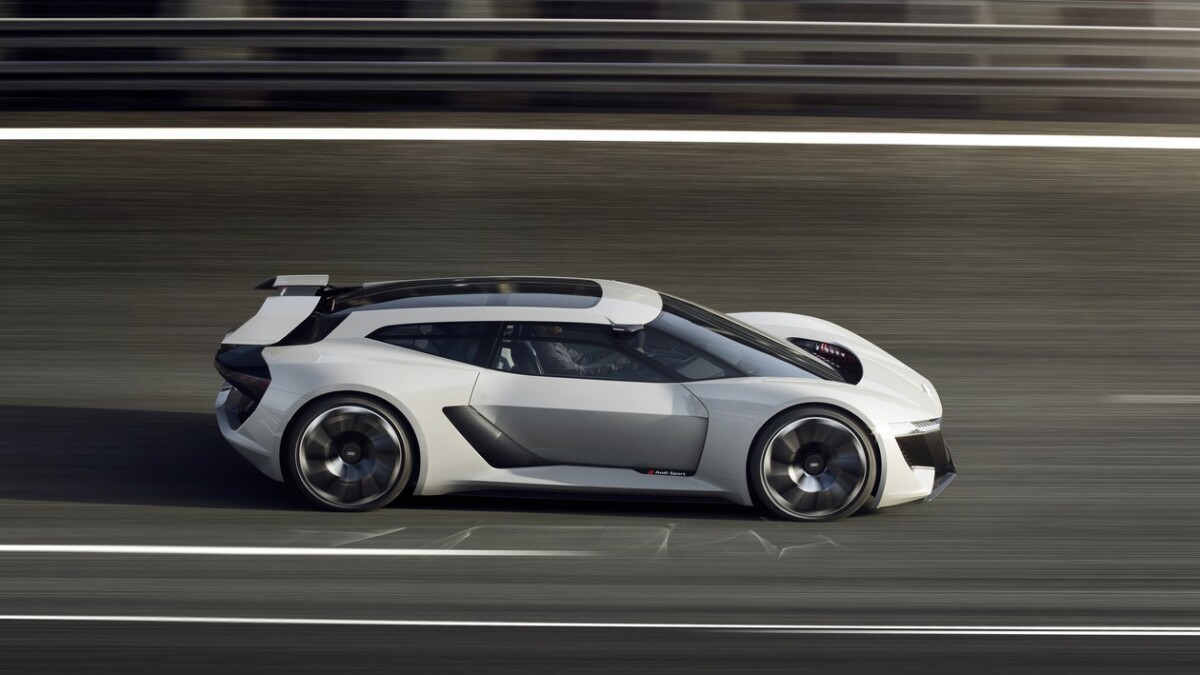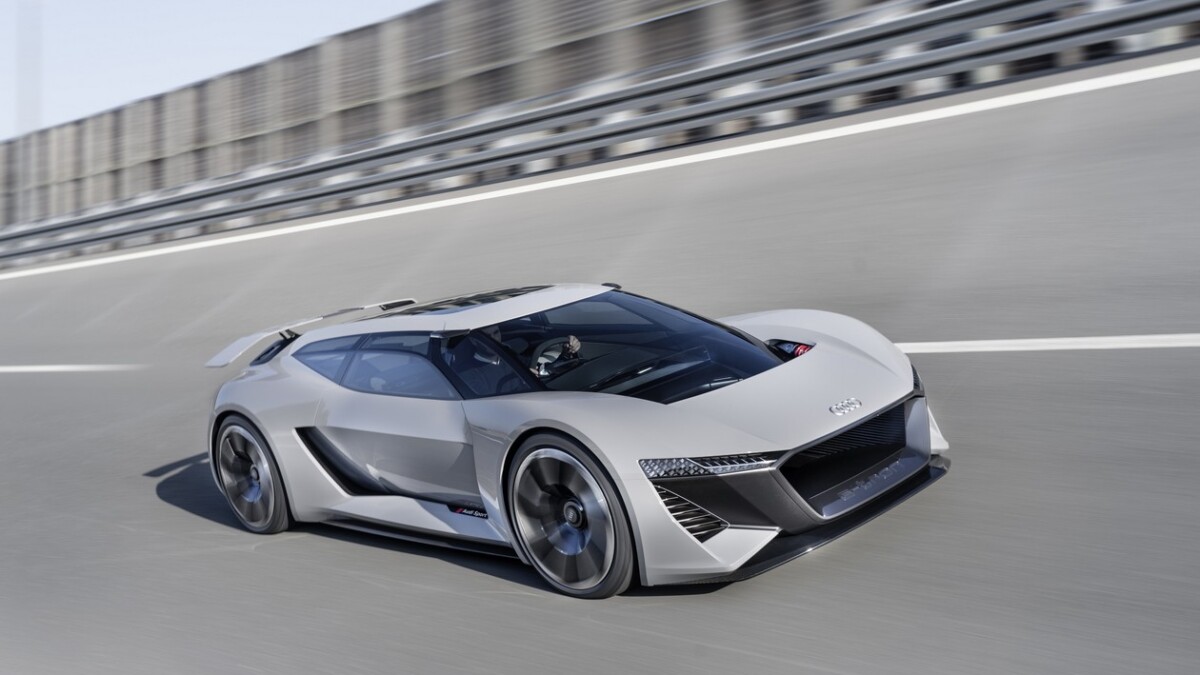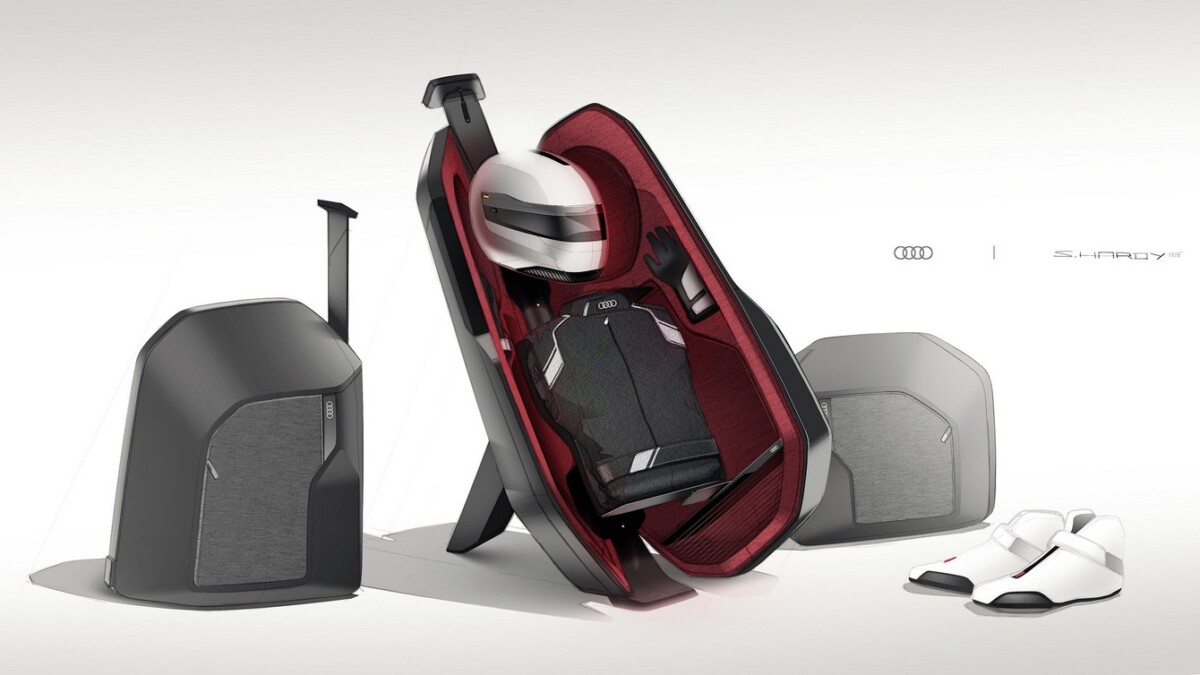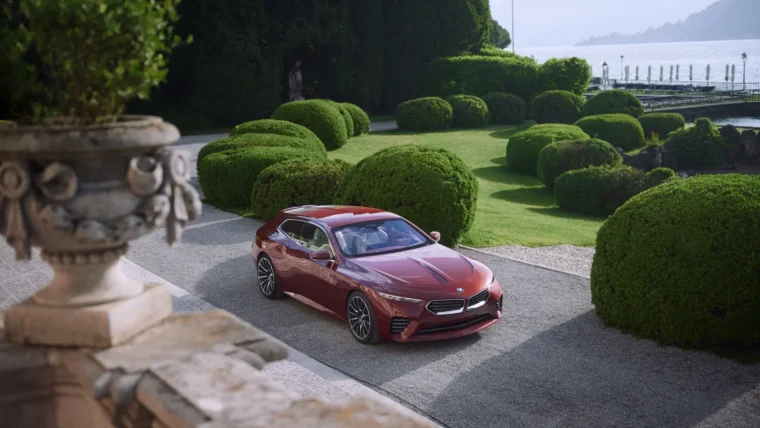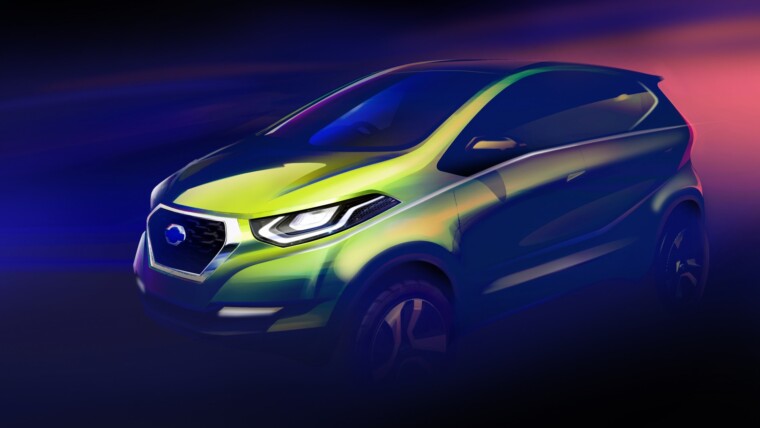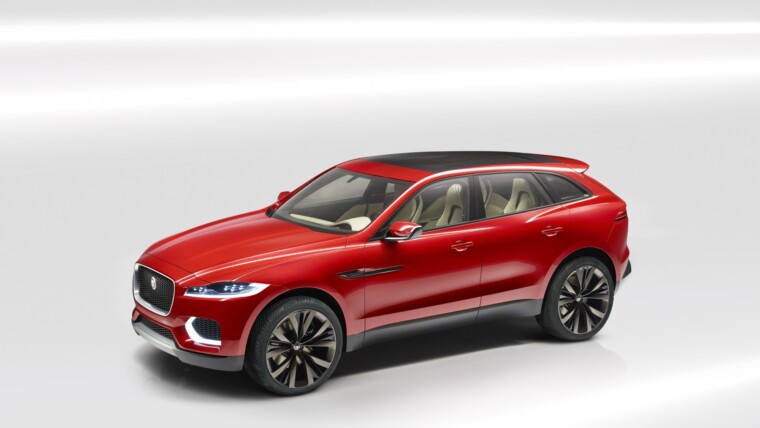Audi is working hard to show that they are in it for the long run when it comes to electric vehicles and they show it via their latest concept car, the Audi PB18 e-tron concept car. The car as you can see has been sculpted by someone obsessed with the wind tunnel and race track and surprisingly, it was designed in California. So I guess you can imagine a guy shouting “whats up dude” riding this car through the Malibu sunset.
The experts at Audi Sport GmbH, the high-performance subsidiary of Audi, were responsible for implementation. The abbreviated name “PB18 e-tron” refers both to the Pebble Beach venue for the premiere and to the technological DNA it shares with the successful LMP1 racing car Audi R18 e-tron.
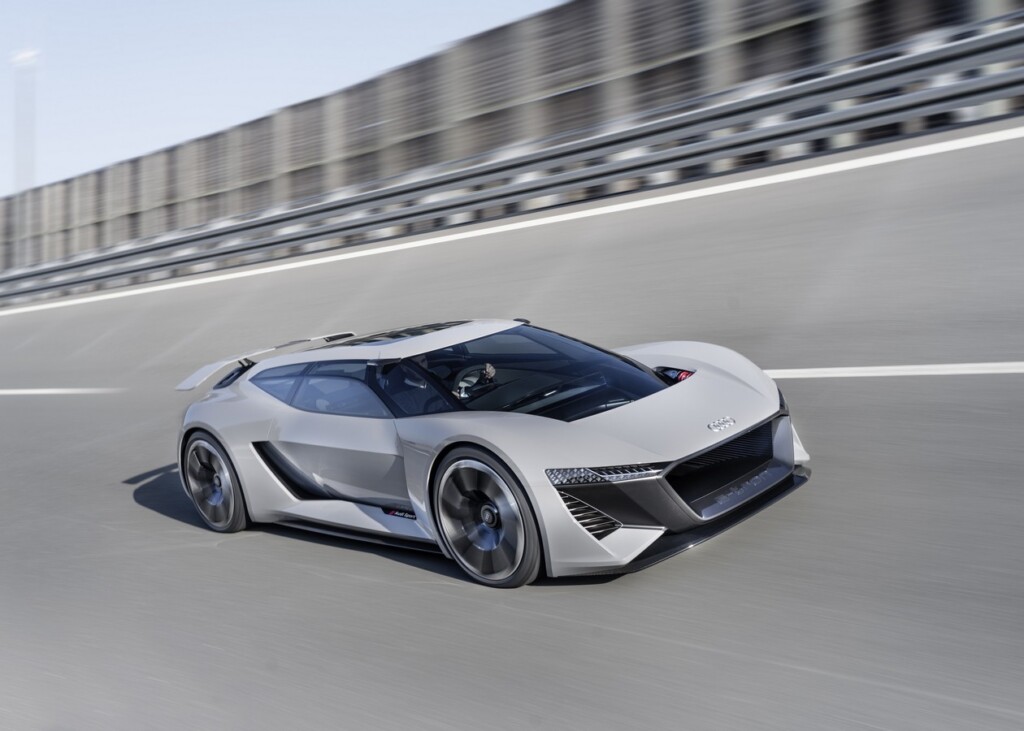
In the Audi PB18 e-tron, the driver is the one steering and stepping on the gas or brake pedal. There are therefore no complex systems for piloted driving on board and no comfort features to add weight. In their place are a driver’s seat and cockpit that are integrated into an inner monocoque shell that can be slid laterally. When driven solo, the monocoque can be positioned in the center of the interior as in a monoposto – the perfect location for the racetrack. This is made possible not least by the by-wire design of the steering and pedals; a mechanical connection of the control elements is not needed.
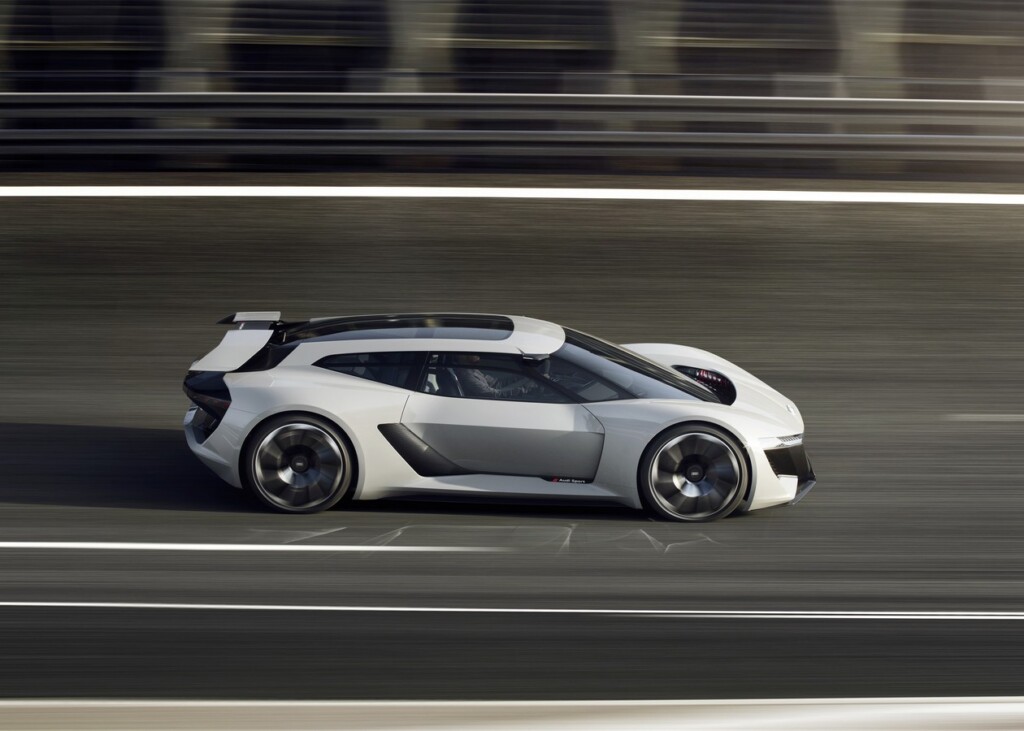
Gael Buzyn is Head of the Audi Design Loft in Malibu – where the Audi PB18 e-tron was born. He describes the most important item in the specifications: “We want to offer the driver an experience that is otherwise available only in a racing car like the Audi R18. That’s why we developed the interior around the ideal driver’s position in the center. Nevertheless, our aim was to also give the PB18 e-tron a high degree of everyday usability, not just for the driver, but also for a potential passenger.”
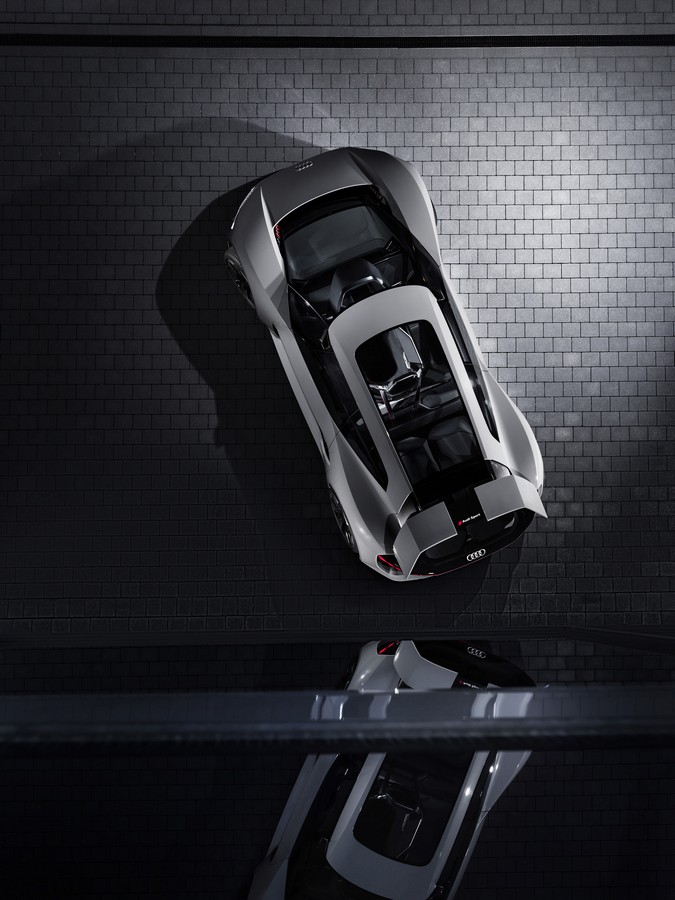
When the driver’s monocoque is slid into the side position, from where the PB18 e-tron can be steered in everyday driving like a conventional road vehicle, there is room for a passenger. An additional seat can be accessed on the other side, integrated low above the ground and equipped with a three-point seatbelt. The driver also benefits when getting in and out from the easily accessible outside position of the monocoque, which can be moved when the door is open up to the sill.
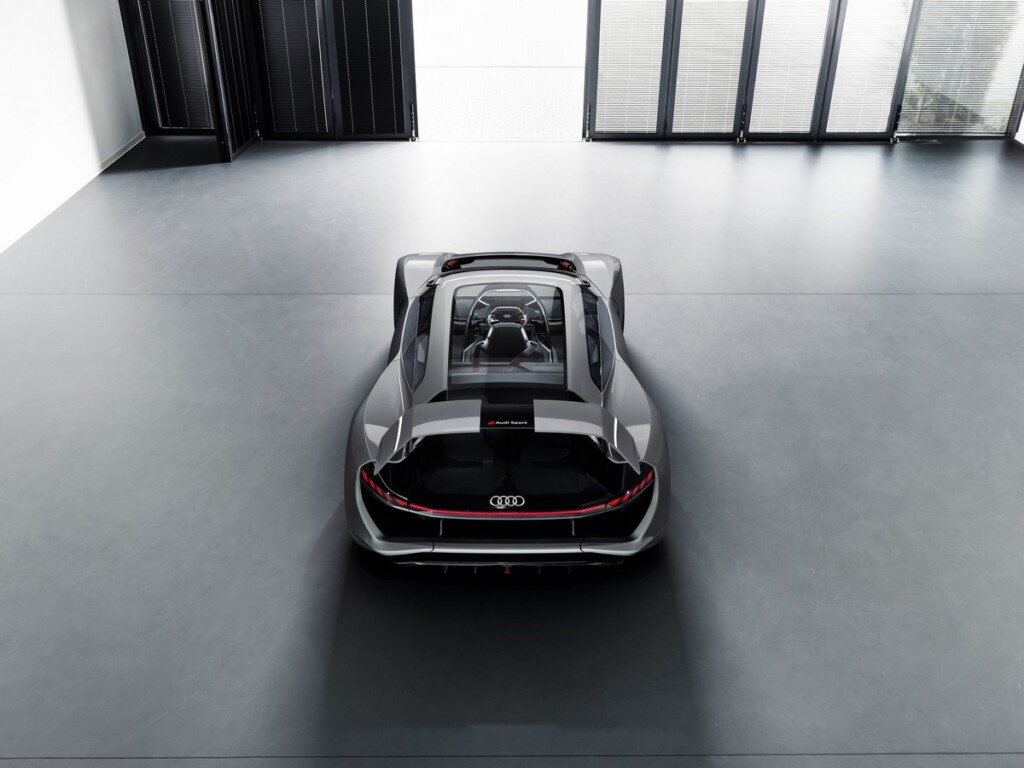
Using physics learned through racing, the PB18 e-tron was designed with a mid-engine car layout with the car’s centre of gravity located behind the seats and in front of the rear axle. Built using a mix of aluminium, carbon and other composites, Audi has made the PB18 e-tron to weigh less than 1,550kg.
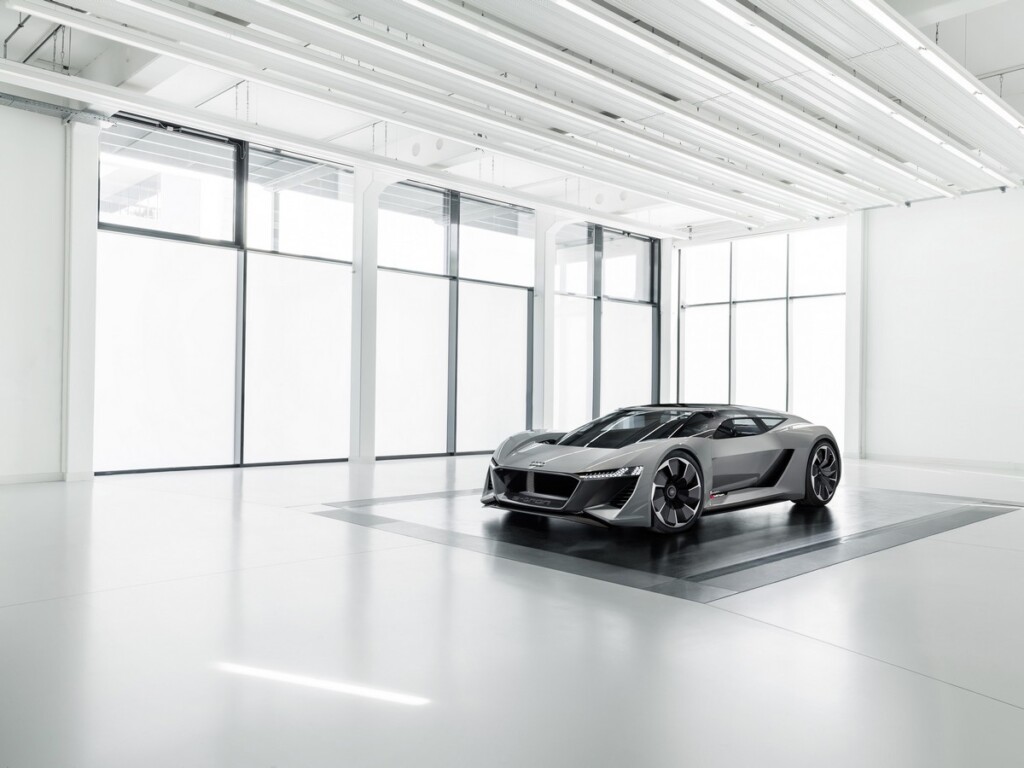
The PB18 e-tron is 4.53 meters long, 2 meters wide and just 1.15 meters tall. The wheelbase is 2.70 meters (8.9 ft) and the overhangs are compact. Together with the large and almost vertical rear window, this design is reminiscent of a shooting brake concept – the synthesis of a coupé with the rear of a station wagon. The result is not only a distinctive silhouette but also, with 470 liters. An exclusive luggage set customized to fit the cargo space helps to make optimum use of the luggage compartment – even if the luggage in this car frequently consists of nothing but a helmet and racing overall.
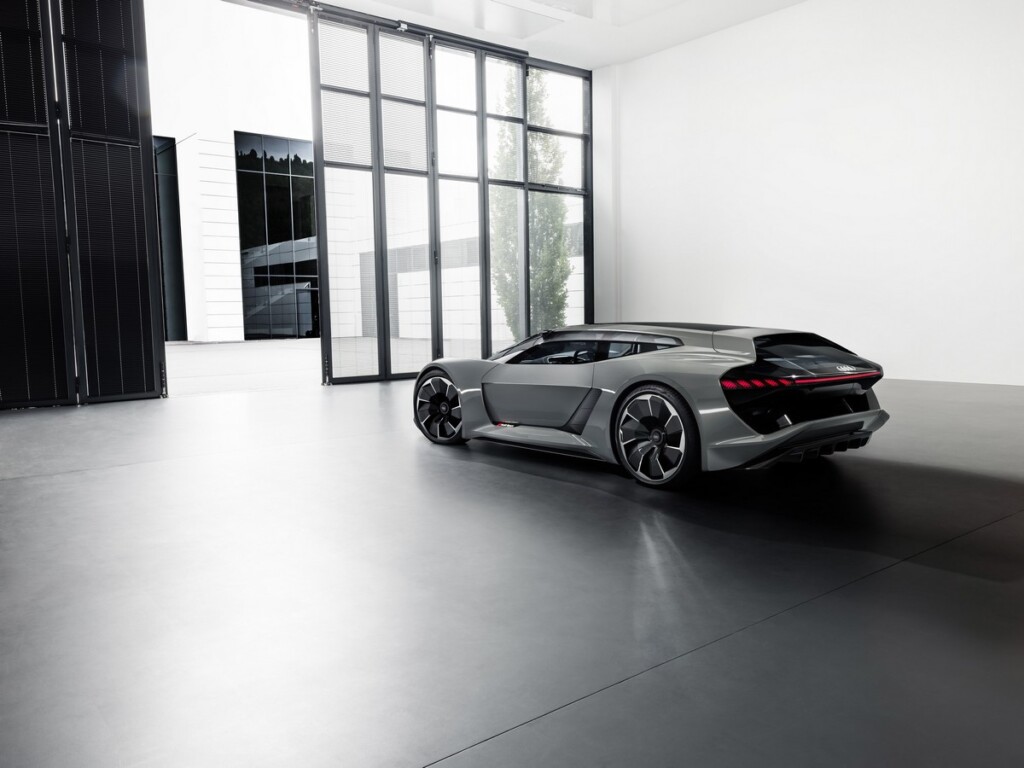
A flat red band of lights extends across the entire width of the rear and underscores the horizontal orientation of the vehicle body. The cabin, placed on the broad shoulders of the wheel arches, appears almost dainty from the rear. The rear diffuser air outlet has been raised high – another functional feature borrowed from motorsport. The diffuser can be moved downward mechanically to increase downforce. The rear spoiler, which normally is fixed, can be extended rearward for the same purpose.
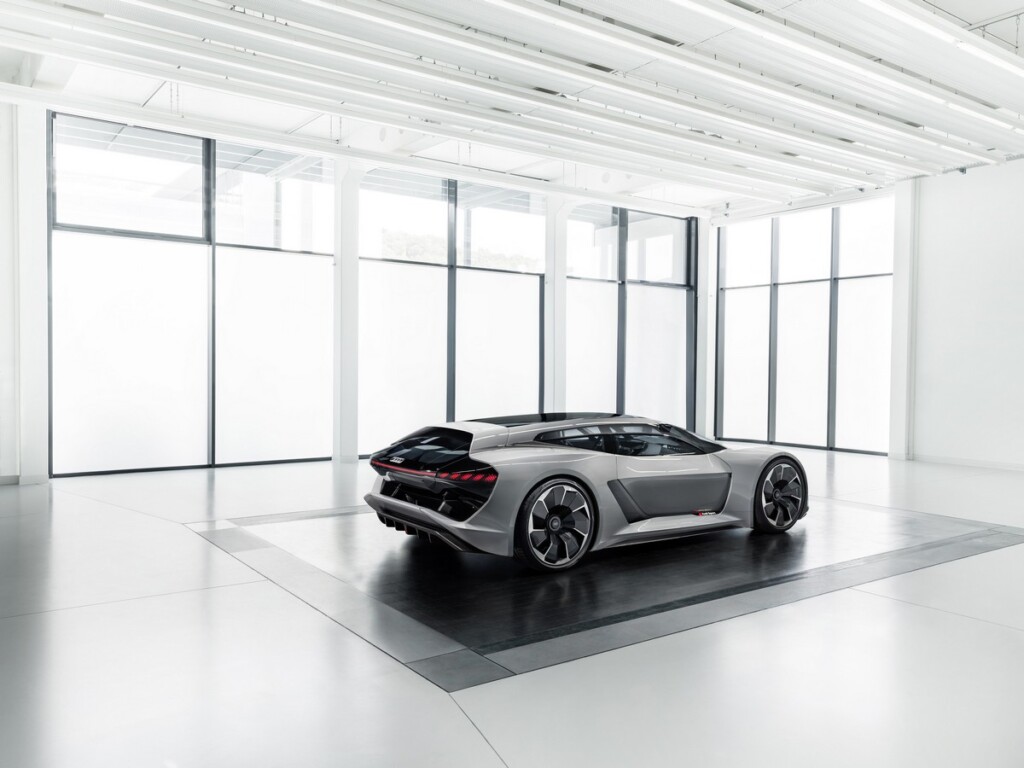
The widely extended wheel arches located opposite the central cabin are noticeable from every angle. They emphasize the extremely wide track of the PB18 e-tron and thereby illustrate the lateral dynamic potential of the car and the obligatory quattro drive. The large 22-inch wheels, each with eight asymmetrically designed spokes are reminiscent of turbine inlets – together with the air inlets and outlets of the wheel arches, their rotation ensures excellent air supply to the large carbon brake discs.

The front is dominated by the familiar hexagon shape of the Singleframe grille, with an emphatically wide and horizontal cut. The brand logo is placed above at the front of the hood, in the typical Audi sports car style. Large air inlets to the left and right of the Singleframe supply the necessary cooling air to the brakes and the front electric motor. Wide and flat light units with integrated digital matrix technology and laser high-beam headlights complete the face of the PB18 e-tron.
The laser high-beam headlight with its enormous range is especially emblematic of the transfer of know-how from motorsport: This technology made its debut in the Le Mans R18 racing car, where the maximum light output at speeds above 300 km/h offered a crucial safety advantage at night as well.
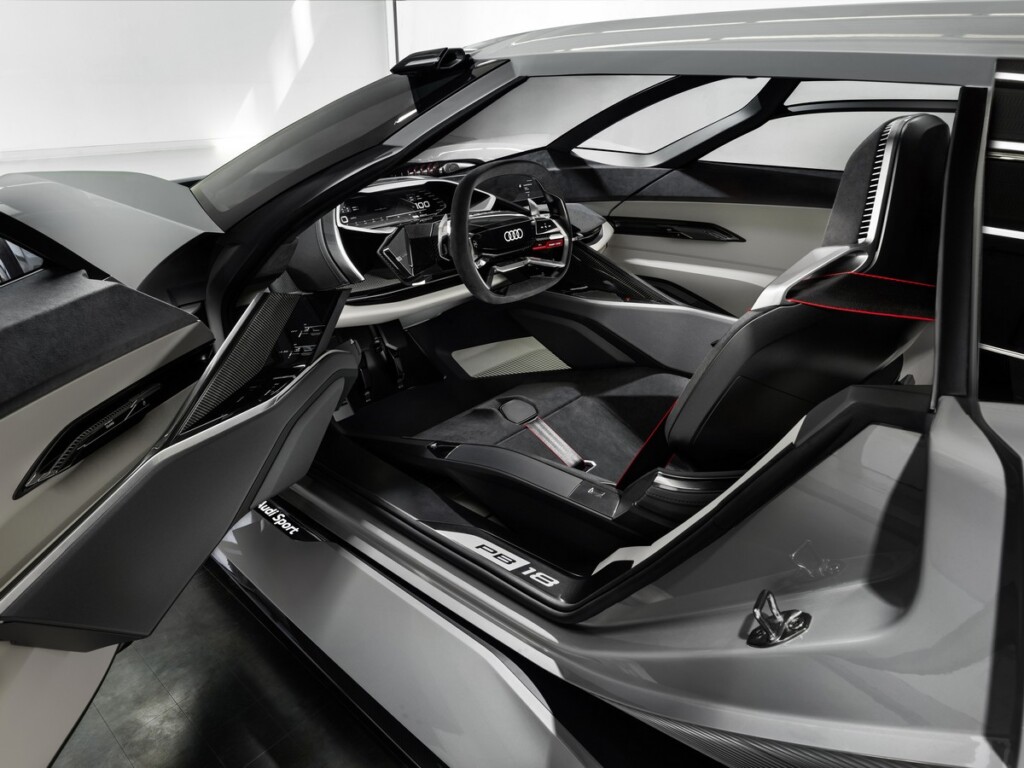
The Audi designers have taken a new tack for air flow through the front hood. The hood dips deeply and acts as a lateral bridge running across the nose, connecting the two emphatically accentuated fenders and also doubling as an air deflector. A design that is thoroughly familiar from racing prototypes.
At the same time, this layout offers the driver a unique quality of visibility, and not just on the race track. Looking through the large windshield from the low seating position, the driver sees precisely into the opening of the ventilated hood and onto the road, and can thus perfectly target the course and apex of the curve. Mounted within the field of vision is a transparent OLED surface. The ideal line of the next curve can be shown on it, for example, precisely controlled with data from navigation and vehicle electronics. In normal road traffic, on the other hand, the direction arrows and other symbols from the navigation system find a perfect place here in the driver’s field of vision, analogous to a head-up display.
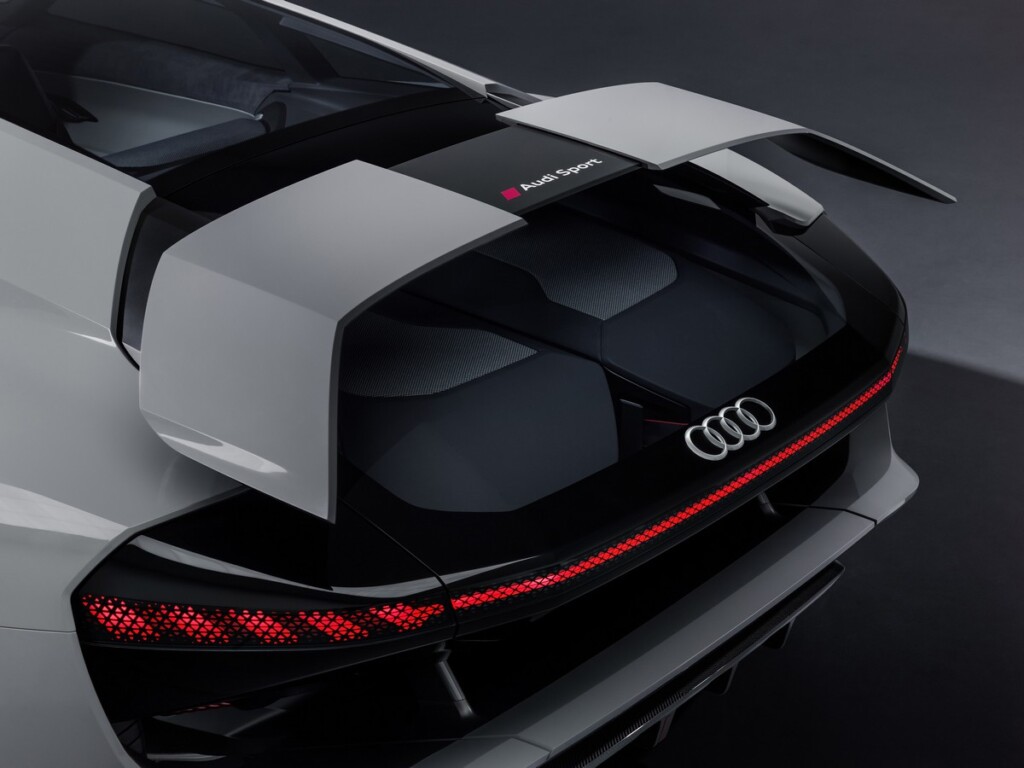
The large-format cockpit itself is designed as a freely programmable unit and can be switched between various layouts for the racetrack or the road, depending on the scenario for use.
The concept uses three powerful electric motors – one up front and two in the rear. The latter are centrally located between the steering knuckles, each directly driving one wheel via half-shafts. They deliver power output of up to 150 kW to the front axle and 350 kW to the rear – the Audi PB18 e-tron is a true quattro, of course. Maximum output is 500 kW, with boosting, the driver can temporarily mobilize up to 570 kW. The combined torque of up to 830Nm allows acceleration from 0 to 100 km/h in scarcely more than 2 seconds – a speed that differs only marginally from that of a current LMP1 prototype.
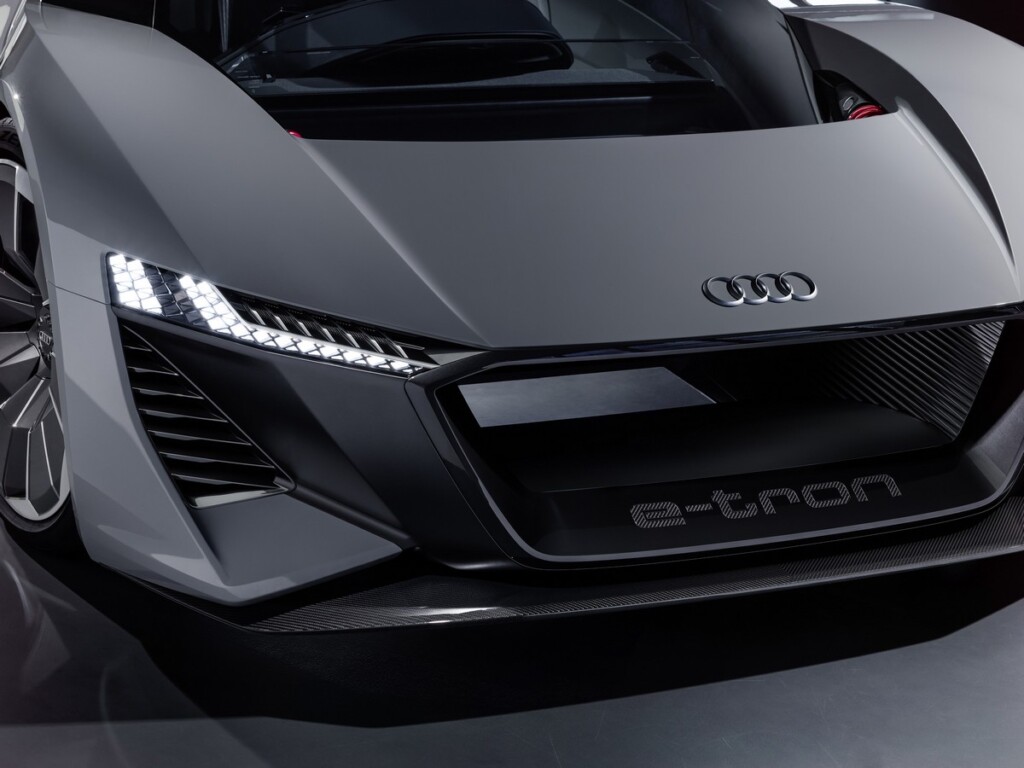
In normal road traffic, the driver can limit the maximum speed in favor of range. This limitation is easy to deactivate on the racetrack and can be adapted to local conditions.
The focus is on not just powerful performance but also maximum efficiency. While being driven, the Audi PB18 e-tronrecovers large amounts of energy: up to moderate braking, the electric motors are solely responsible for decelerating the vehicle. The hydraulic brakes only come into play for heavy braking.
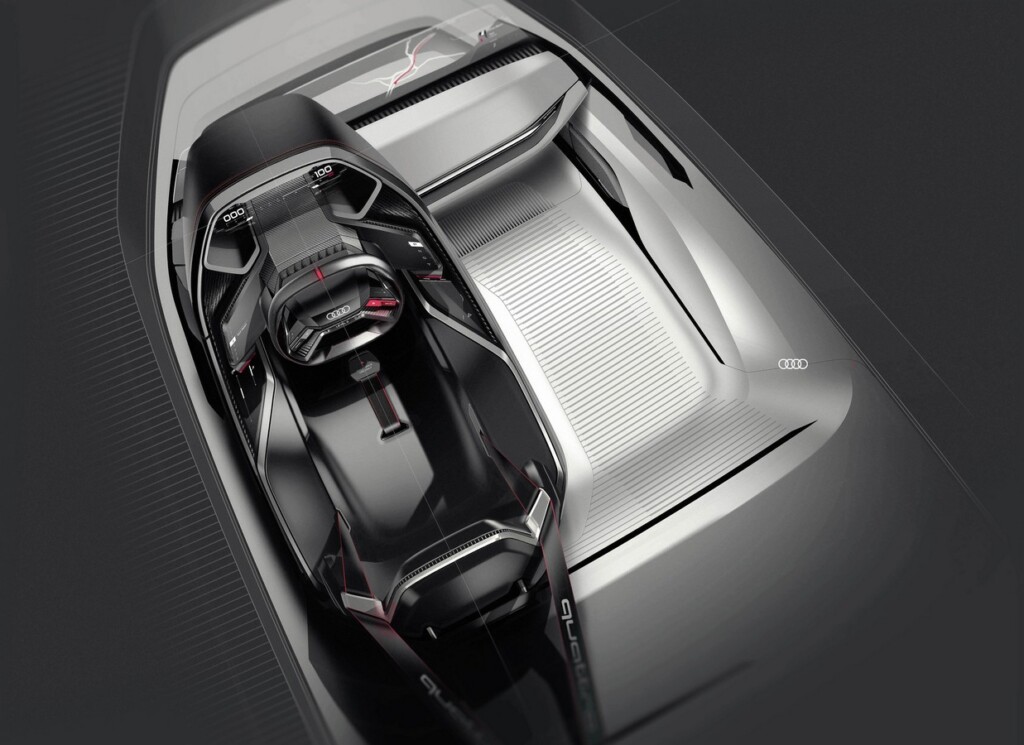
The concept of separate electric motors on the rear axle offers major advantages when it comes to sporty handling. The Torque Control Manager, which works together with the Electronic Stabilization Control (ESC), actively distributes the power to the wheels of the front and rear axles as needed. This torque control provides for maximum dynamics and stability. Thanks to the virtually instantaneous response of the electric motors, the control actions are lightning-quick. The drive concept of the Audi PB18 e-tron adapts perfectly to every situation, whether involving transverse or longitudinal dynamics.
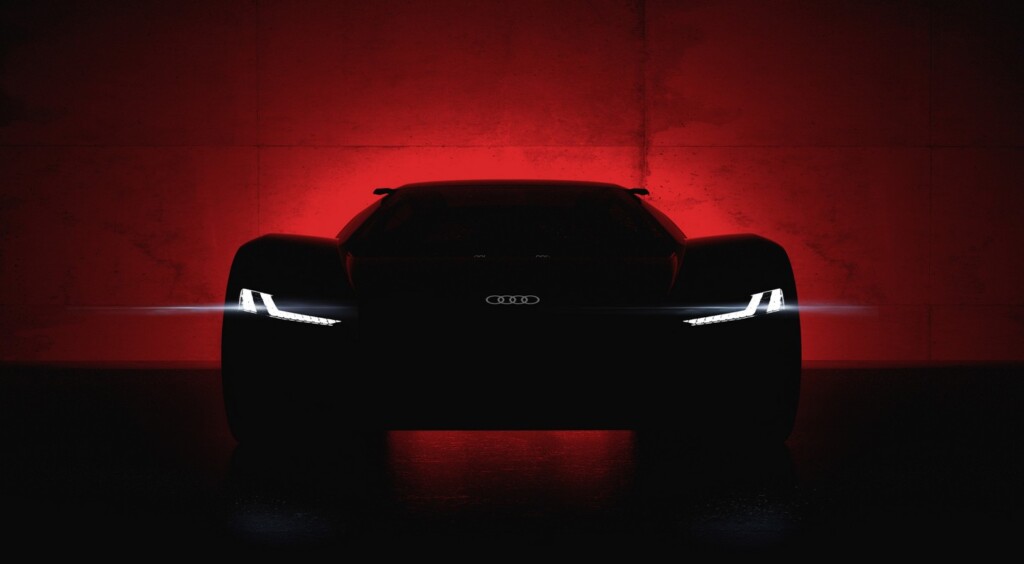
The liquid-cooled solid-state battery has an energy capacity of 95 kWh. A full charge provides for a range of over 500 kilometersin the WLTP cycle. The Audi PB18 e-tron is already designed for charging with a voltage of 800 volts. This means the battery can be fully recharged in about 15 minutes.
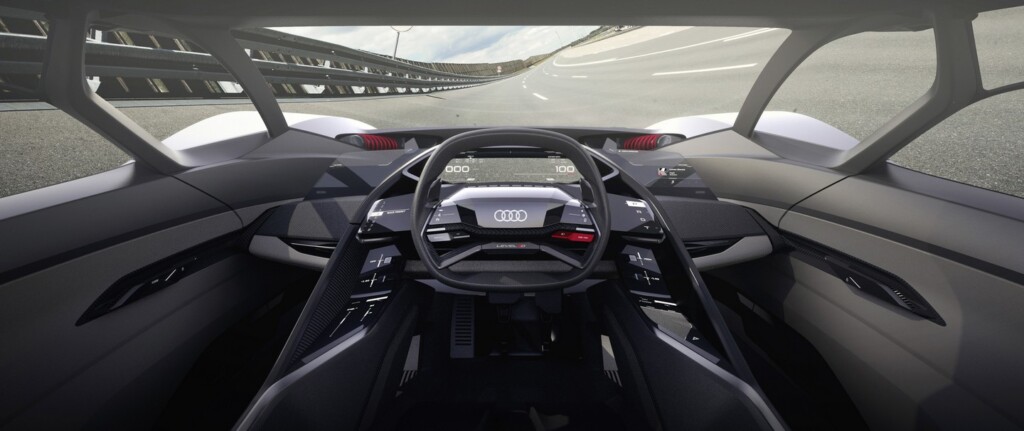
The Audi PB18 e-tron can also be charged cordlessly via induction with Audi Wireless Charging (AWC). This is done by placing a charging pad with integral coil on the floor where the car is to be parked, and connecting it to the power supply. The alternating magnetic field induces an alternating voltage in the secondary coil fitted in the floor of the car, across the air gap.
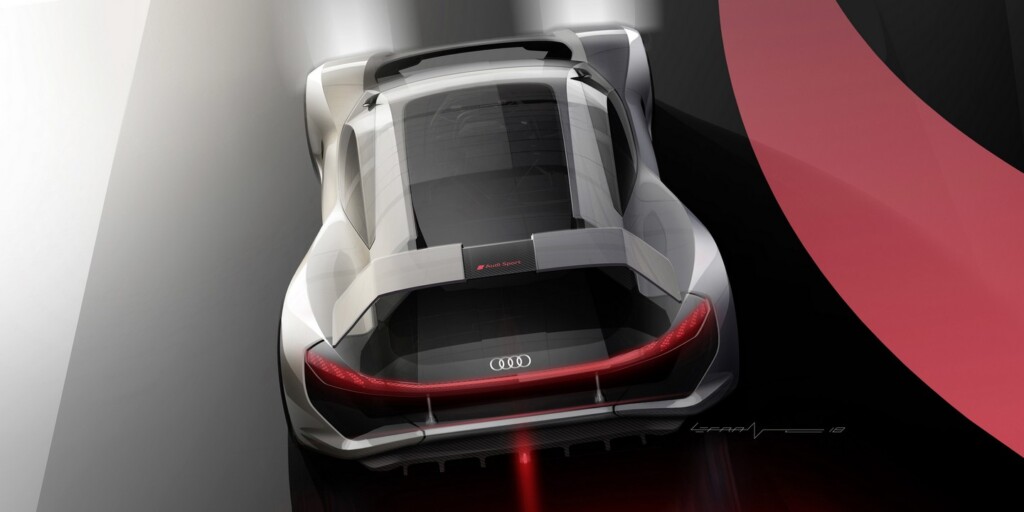
The front and rear have independent suspension on lower and upper transverse control arms, and, as commonly found in motor racing, a push-rod system on the front axle and pull-rod system on the rear – in both cases with adaptive magnetic ride shock absorbers. The suspension of the Audi R18 e-tron quattro Le Mans racing car served as the model for the basic architecture.
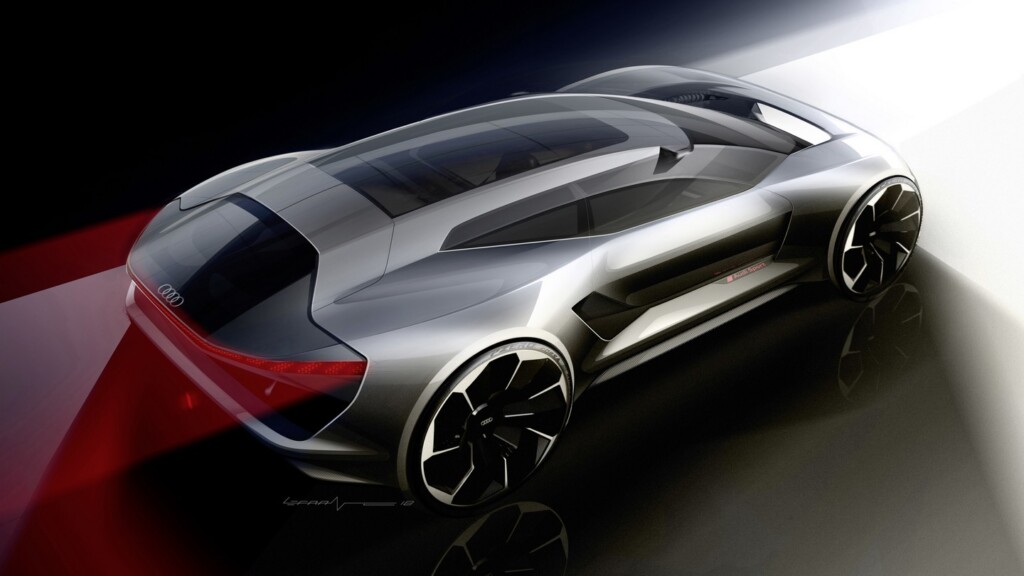
The wheels measure 22 inches in diameter and are fitted with 275/35 tires in the front and 315/30 in the back. Large carbon brake discs with a 19-inch diameter, in conjunction with the electric brake, safely and steadily decelerate the Audi PB18 e-tron even in tough racetrack conditions.


Design Sketch 


Design Sketch 
Design Sketch 
Design Sketch 
Design Sketch 
Design Sketch 




Detail Colour: Curcuit grey 
Detail Colour: Curcuit grey 

Interior 
Interior 
Interior 

Static photo Colour: Curcuit grey 


Static photo Colour: Curcuit grey 

Static photo Colour: Curcuit grey 

Dynamic photo Colour: Curcuit grey 
Static photo Colour: Curcuit grey 
Dynamic photo Colour: Curcuit grey 
Dynamic photo Colour: Curcuit grey 


Design Sketch
Other posts by Mark Leo

